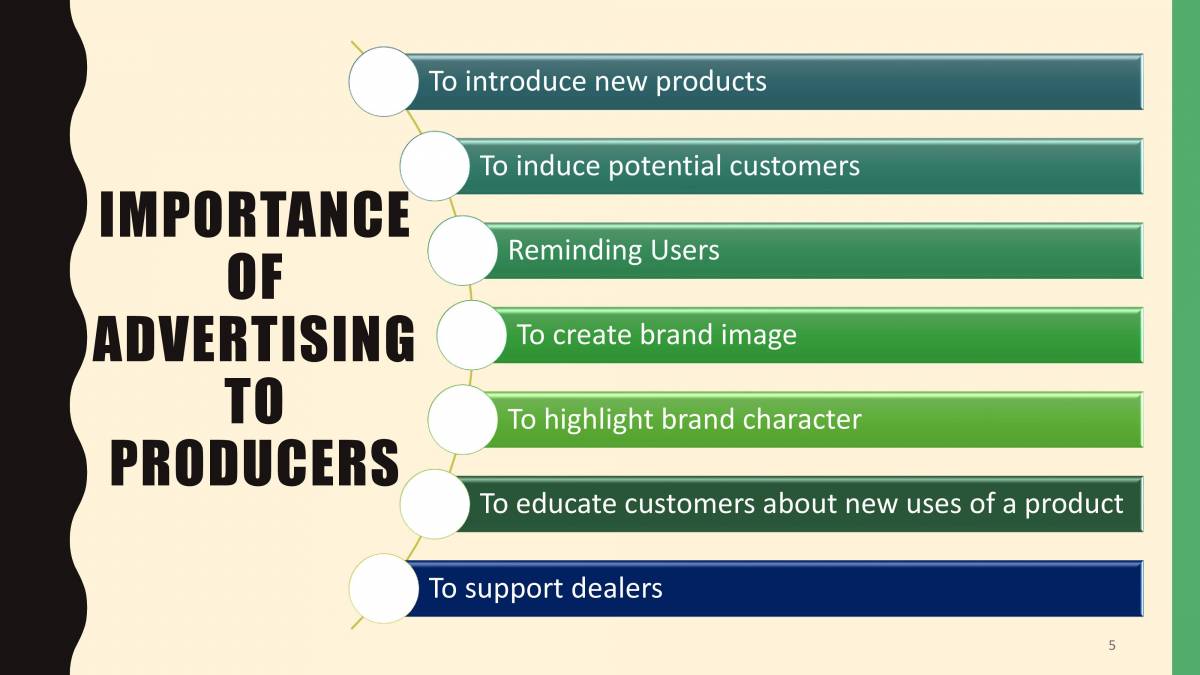
- jaro education
- 4, May 2024
- 10:00 am
Advertising management stands as a cornerstone for success in any digital or traditional business. With 68% of marketers deeming it crucial for their overall marketing strategy, the significance of effective advertising cannot be overstated.
Effective advertising goes beyond merely promoting products or services; it involves crafting compelling messages that resonate with your audience, elevating your brand’s visibility, and igniting interest in your offerings. Whether in the realm of B2C or B2B, the essence remains the same: creativity coupled with precision is key.
Consider the memorable Apple 1984 commercial that charmed consumers with its magic or the intricately targeted digital ads that seamlessly weave into the buyer’s journey. In both cases, the aim is to create a lasting impact and drive meaningful engagement.
However, mastering advertising management is no easy task; it requires lots of learning and patience. In this article, you will explore the different parameters of advertising management – from its definition and types to its objectives and the benefits it offers to businesses.
What is Advertising Management?
Advertising management is the process of strategically planning, overseeing, and controlling various advertising activities with the goal of influencing the buying decisions of target audiences. The primary objective of advertising management is to develop and position ads in the most suitable platforms to yield optimal results.
The scope of advertising management includes analyzing the current advertising strategy and target audience, assessing its effectiveness, and aligning it with predefined objectives. It also involves budget allocation, crafting compelling messaging, recruiting specialized professionals, and supervising their tasks.
Table of Contents
Incorporating effective advertising management practices into your business strategy aims to introduce specific products or services to the relevant audience, enhance brand image, increase brand awareness, and ultimately drive sales growth. While some individuals may attempt to handle these processes independently, others opt to engage professional digital agencies for expert assistance.
Objectives of Advertise Management
The primary aim of any promotional effort should revolve around initiating meaningful conversations between the brand and its customers, ultimately leading to increased sales and profits. However, there are several facets to consider in this endeavor. Prior to launching a campaign, it is crucial to define advertising management objectives:
Introducing Your Brand
The first goal of advertising is to tell potential customers about your brand. This could mean letting them know about your services, introducing a new product, offering something interesting, or talking about entering a new market. These things can start conversations about your brand and set the stage for other goals.
Persuading Customers
Another goal is to convince potential buyers that your product or service is the best. This means showing why you’re better than competitors and encouraging them to switch to your brand. Every ad should have a clear purpose and ask viewers to do something, like clicking a link or filling out a form.
Reminding Your Audience
Some ads start fresh, especially for new companies, while others aim to remind people about your brand. The goal is to remind them of what you stand for, highlight what makes you unique, and explain why you’re better than others.
Importance of Advertising Management
Here are some key reasons why advertising management is crucial:
- Creating Impactful Ads: Advertising management helps create ads that leave a mark on the audience, thanks to thorough market research and tailored strategies.
- Optimizing Resources: It ensures that resources allocated to ads are used effectively, sticking to budgets and timelines to maximize results and save costs.
- Boosting Revenue: By understanding customer needs and preferences, advertising management designs ads that improve customer retention and drive higher sales.
- Monitoring Performance: It continuously evaluates ad performance, making necessary adjustments to improve effectiveness and achieve desired outcomes.
- Building Brand Reputation: Effective ads crafted through advertising management build a strong brand image, gaining consumer trust and loyalty.
- Strategic Market Penetration: In today’s competitive market, advertising management helps businesses stand out by crafting compelling strategies to attract and retain customers.

*learnpick.in
Different Models of Advertise Management
It’s important to understand how advertisement models work on different platforms to ensure profitability for your advertising campaign. Different models can help with this:
AIDA Model: This model from the 1920s says ads should get Attention, Interest, Desire, and Action from people. They should grab attention, interest people, make them want the product, and get them to act.
Five-Stage Model: Developed in the 1930s, this model says ads go through five steps: Awareness, Interest, Evaluation, Trial, and Adoption.
Six-Stage Model: This model looks deeper into how people buy things. It talks about Awareness, Knowledge, Liking, Preference, Conviction, and Purchase. It also considers competition in the market.
DAGMAR Model: Since the 1950s, this model has been part of a group called the “hierarchy of effect” model. DAGMAR stands for Defining Advertising Goals for Measured Advertising Results. It talks about stages customers go through like not knowing about a product, learning about it, understanding it, believing in it, and finally buying it.
Types of Advertising
There are several branches of advertising management. Such as:
Print Advertising – Print media has long been utilized for advertising purposes. Newspapers and magazines are popular platforms for companies worldwide. They use print media to promote products through brochures and flyers. Advertisers purchase space in newspapers and magazines, with costs determined by factors like space quantity, publication page, and paper quality. Front-page ads are pricier than inside-page ads and glossy supplements command higher costs than ads in standard-quality papers.
Broadcast Advertising – This form of advertising is globally popular, encompassing television, radio, and internet platforms. Television ads reach a broad audience and are highly favored. Costs vary based on ad length and airing time; prime-time slots are more expensive. Though radio advertising has waned with television and internet prevalence, it still appeals to specific audiences, especially with catchy jingles.
Outdoor Advertising – Utilizing billboards, kiosks, and events, outdoor advertising captures customer attention effectively. Billboards, scattered throughout cities, require captivating content. Kiosks serve as convenient product outlets and information hubs. Events like trade fairs promote products and indirectly advertise services, making outdoor advertising a potent tool.
Covert Advertising – This unique strategy subtly embeds products or messages in movies or TV shows without overt ads. For instance, Tom Cruise’s use of a Nokia phone in the film Minority Report is a form of covert advertising.
Public Service Advertising – This advertising type focuses on public causes like AIDS awareness, energy conservation, and poverty alleviation. It’s crucial for raising public awareness on vital issues and has become increasingly important as an effective messaging tool.
One of the major components of advertisement is mass communication, which helps to strengthen your brand positioning. You can learn mass communication with the Online Master of Arts (Mass Communication) programme offered by Symbiosis School for Online and Digital Learning (SSODL), which is designed to enhance foundational knowledge in the history and analysis of social, political, cultural, and economic structures, as well as current affairs. It integrates a balanced blend of theory and practical application, catering to individuals aspiring to build a career in the media and Advertising industry.
How to Plan Advertising?
An advertising plan serves as a strategic blueprint outlining how a company intends to communicate with its target audience. Within this plan, the audience is defined alongside the chosen mediums for communication. These mediums can encompass various channels such as newspaper advertisements, billboards, email campaigns, and social media platforms like Facebook, Twitter, and LinkedIn. Additionally, direct mail methods such as distributing flyers or postcards may also be included in the advertising plan’s strategy.
To create an effective advertising plan, you can follow these steps:
- Define Objectives: Begin by clearly defining your overall goals. Identify key performance indicators (KPIs) or objectives that will shape your advertising plan. These metrics should align with your business goals, such as improving customer retention or expanding your customer base. Defining metrics helps make marketing objectives transparent for all team members.
- Allocate Budget: Determine your budget, considering both paid advertising expenses and staffing costs. This includes hiring full-time part-time employees, copywriters, and freelance contributors to execute the plan effectively.
- Develop Content Strategy: Detail your content initiatives within the advertising plan. Specify the frequency of content release (daily, weekly, monthly), platforms for promotion, and associated KPIs for each content type. Additionally, outline digital marketing strategies for each channel and establish a timeframe to evaluate the plan’s effectiveness. Utilize insights from your company’s marketing plan, such as target market analysis, competitive data, and market research, to inform your content strategy.
- Assign Responsibilities: Clearly outline responsibilities and assign specific tasks to team members. Ensure that team leaders and members understand their group and individual responsibilities. Empower team leaders to delegate day-to-day tasks effectively.
Strategy for Advertising Management
Media strategy plays a pivotal role in advertising as it aims to determine the optimal approach for conveying messages to targeted consumers. The fundamental goal is not merely to attract customers but also to ensure that the message is delivered persuasively and relevantly, aligning with the right audience at the right time. This necessitates careful planning by organizational planners while considering budgetary constraints.
The media strategy process revolves around three crucial decisions, often referred to as the three “Ws”:
Where to Advertise?
This pertains to identifying the appropriate geographical locations where advertisements should be visible to potential customers. It extends beyond traditional mediums like TV and radio to encompass platforms such as newspapers, blogs, sponsorships, hoardings, and cinema ads, with variations based on national, state, or local targeting.
When to Advertise?
Timing is critical in advertising to ensure maximum impact. For instance, promoting raincoats is effective as the rainy season approaches rather than during winter. Planners must strategically time advertisements to coincide with periods when customers are most likely to purchase, all while adhering to budgetary constraints, typically capped at around 20% of company revenues for advertising expenditures.
What Media Type to Use?
The choice between media concentration and media dispersion approaches plays a crucial role. It mainly follows two main approach:
- Media Concentration Approach: Focuses on a limited number of media categories (e.g., two or three), ideal for companies seeking a clear, unambiguous brand presence without confusion among competitors.
- Media Dispersion Approach: Utilizes a diverse range of media categories, including TV, radio, internet, mobile messaging, and more. This approach is adopted by businesses aware that a single medium may not effectively reach their target audience, allowing for broader outreach and engagement.
How to Measure Effect of Advertising?
There are various methods to assess the efficacy of an advertising campaign:
Establishing a Specific Goal
Defining a precise objective for your advertising initiative is crucial for gauging its performance. For instance, aiming to boost Instagram followers by 20% is more measurable than simply aiming for a general increase in social media followers.
Analyzing Website Traffic
A successful advertising campaign typically results in increased website traffic. Potential customers often research companies by visiting their websites when considering doing business with them. Comparing site traffic levels before and after the campaign helps determine if there’s been an uptick in visits. Utilizing analytics tools can provide detailed reports on daily, weekly, and monthly site traffic.
Evaluating Lead Quality
The quality of leads reflects their likelihood of converting into customers. Factors to consider in gauging lead quality include:
- Pages visited: Are leads engaging more with product pages or blog posts?
- Time spent on pages: Are they briefly skimming through or spending significant time exploring your site?
Referral sources: Did leads find your page through social media or search engines? - By focusing on lead quality, businesses can enhance their chances of turning leads into sales.
Comparative Analysis of Key Metrics
To assess advertising campaign effectiveness accurately, analyzing pre-campaign metrics alongside post-campaign data is essential. This contextual comparison helps identify successful strategies and areas for improvement.
Survey-Based Testing
Conducting surveys provides valuable insights into how well an advertising campaign resonates with the audience. By asking specific questions, surveys can help:
- Determine the reach of the ad.
- Gather feedback on viewers’ perceptions of the ad.
- Assess brand recall among potential leads.
Best Practices for Effective Advertising Management
Effective management of advertising plays a crucial role in ensuring the success of advertising campaigns, resonating with the intended audience, and ultimately driving business growth. Below are some recommended practices to consider:
Understanding Your Audience
- Conduct thorough market and consumer research to comprehend your audience’s preferences, behaviors, and challenges.
- Segment your audience into distinct groups based on demographics, psychographics, and behavior to customize your advertising messages effectively.
Setting Clear Objectives
- Ensure that your advertising objectives are Specific, Measurable, Achievable, Relevant, and Time-bound (SMART).
- Align your advertising goals with broader business objectives, such as brand awareness, lead generation, or sales.
Choosing the Right Channels
- Employ an omnichannel approach by utilizing a blend of digital, print, and broadcast channels based on your audience’s preferences.
- Experiment with different channels and evaluate their effectiveness to determine the optimal mix for your campaigns.
Crafting Compelling Messages
- Clearly communicate your product/service’s value proposition and how it addresses your audience’s needs or improves their lives.
- Develop engaging and relevant content (including images, videos, and copy) that resonates with your target audience.
Leveraging Data and Technology
- Utilize data analytics to make informed decisions regarding targeting, channel selection, and budget allocation.
- Implement marketing technology tools and platforms for campaign management, automation, and performance tracking.
Optimizing and Iterating
- Conduct regular tests on various aspects of your ads (e.g., creatives, messaging, targeting) to identify the most effective strategies.
- Analyze campaign performance data to pinpoint areas for enhancement and adjust your approach accordingly.
Focusing on Customer Experience
- Maintain brand consistency across all channels to establish brand recognition and trust.
- Engage with your audience through social media, customer service, and feedback channels to nurture relationships and loyalty.
Ensuring Regulatory Compliance and Ethical Advertising
- Adhere to all relevant advertising laws, regulations, and industry guidelines to avoid legal complications.
- Practice ethical advertising by being truthful, avoiding misleading claims, and respecting consumer privacy.
Conclusion
The journey from awareness to purchase in the buyers’ journey is intricately guided by advertising. Ads serve as catalysts, warming up leads, introducing your brand to the target audience, unlocking new markets, nurturing brand loyalty, and ultimately driving sales. However, to harness the full potential of advertising, investing in advertising management is essential.
Thus, Advertising management is like the guiding force behind successful ad campaigns. It means setting clear goals, choosing the best ways to market, picking the right places to advertise, and carefully carrying out plans to reach those goals. By focusing on advertising management, businesses can fully unlock the benefits of advertising, ensuring continued growth and success in today’s competitive world.








